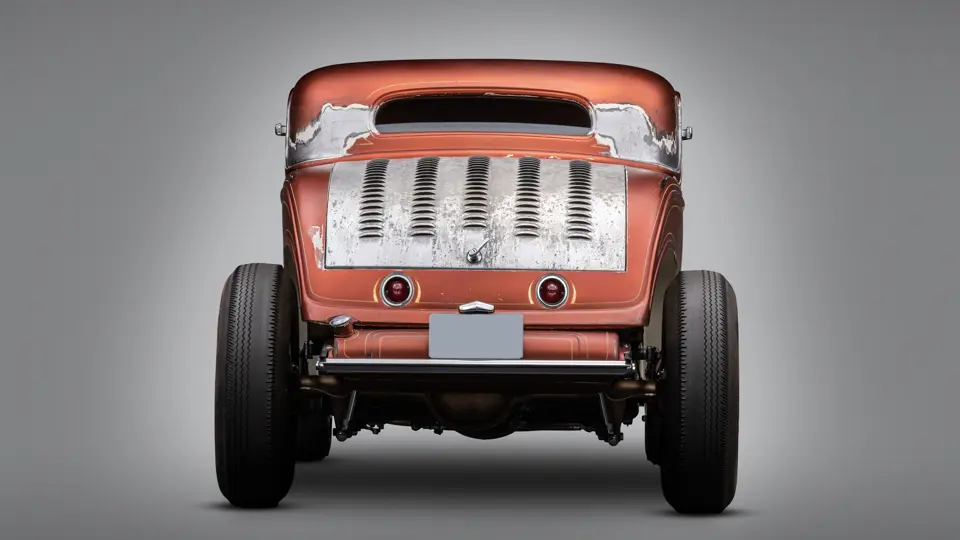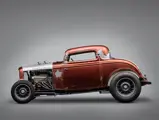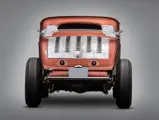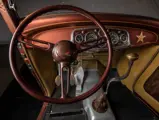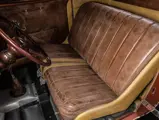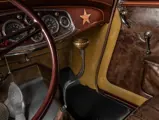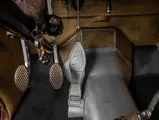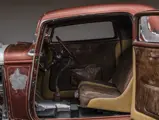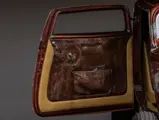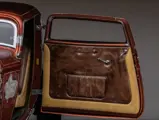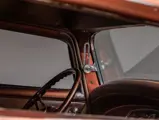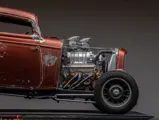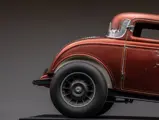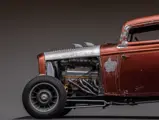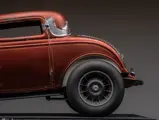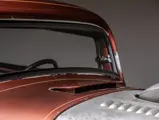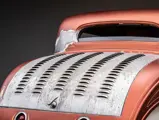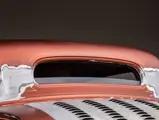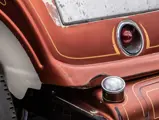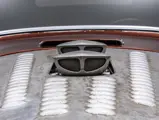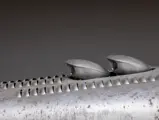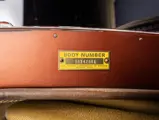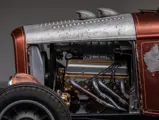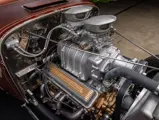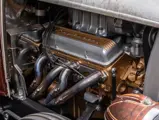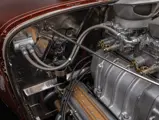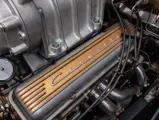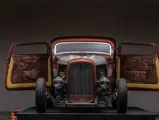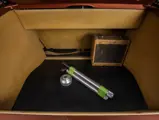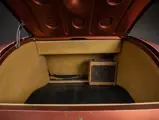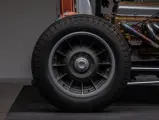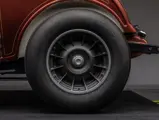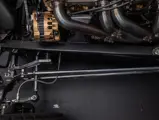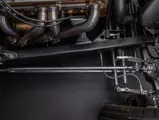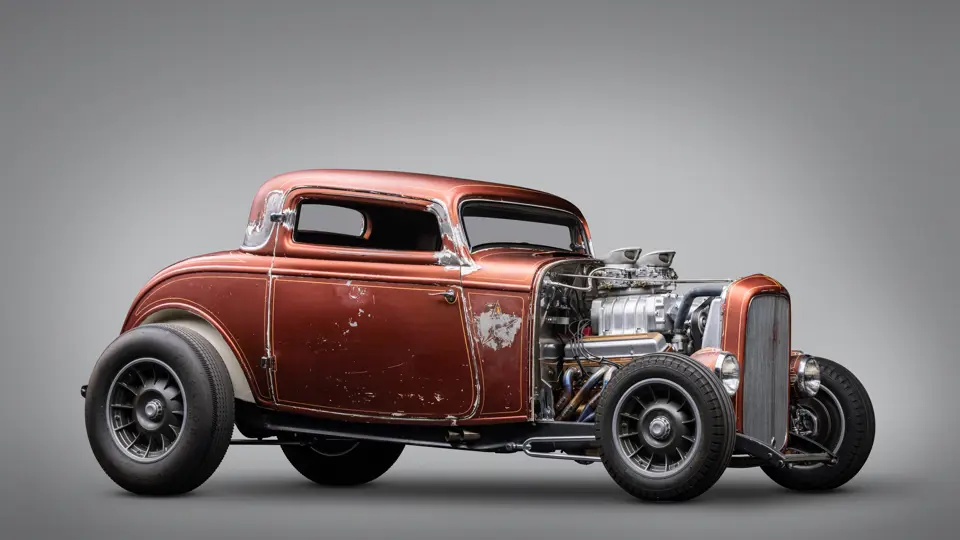
1932 Ford "Fender-Less" Three-Window Coupe
{{lr.item.text}}
$123,200 USD | Sold
The Paul Andrews Estate Collection
{{bidding.lot.reserveStatusFormatted}}
- Stunning hot rod build completed in 2011
- A collaboration of Chris Andrews, Chip Foose, Bobby Walden, Steve Moal, and Austin Speed Shop
- Shown at the 2011 Hot Rod Revolution held at Camp Mabry in Austin, Texas
- Featured on the cover of the August 2012 issue of Street Rodder magazine
- Accompanied by select build invoices
This 1932 Ford Three-Window Coupe, nicknamed “Fender-Less,” was commissioned by Chris Andrews and built by some of the biggest names in the hot rod community including Chip Foose, Bobby Walden, Steve Moal, and the Austin Speed Shop. It was completed in 2011.
The body is one of Walden’s modified 1932 three-window Brookville Bodies. It features a four-inch chop and a laid back windshield, among other more subtle modifications. The chassis is a Steve Moal 1932 T-Bar chassis. It features a front and rear torsion bar suspension, four-wheel disc brakes, and a Currie nine-inch rear axle. Andrews further specificed a 525 steering box and a Moal triple “hanging” pedal configuration.
With the basis of the car in place, it was sent to Austin Speed Shop where Bobby “Bleed” Merkt began the fabrication of various things to make the design concept a reality. Andrews then acquired from Foose an Indy Speedster radiator designed by Jackie Howerton and built by Be Cool. Andrews discussed his plans with Foose on his current 1932 build and asked if Foose would re-work some of the car’s design elements. Foose agreed, and designed the aluminum hood and decklid, flying to Texas to work on the car. His hood featured a fanned louver design with one-off billet air cleaners by Foose that were sanded to attain the appearance of cast aluminum. Luc DiCiurcio of Austin Speed Shop fabricated the radiator shroud.
The car is powered by a 1967 Chevrolet Corvette 327-cubic-inch V-8 engine with Dart aluminum heads, and a Cragar 4:71 blower. The engine was built by John Standifer, and the Cragar Blower was acquaired from Walden, who had recently begun remanufacturing the coveted hot rod accessory. Austin Speed Shops’s Patrick Tilbury fabricated the headers as well as the exhaust cutouts in the framerails. The firewall was done by Greg Cox of Artistic Silver Plating; it is nickel plated, but with a twist—Foose asked to only flash-chrome the finish, giving it an aged, yellowed appearance. The engine is backed by a modern Tremec five-speed manual transmission, with a shifter stalk bent to better accommodate occupants. It is capped off with a brass door knob serving as the shift knob.
The exterior finish was pitched by Foose to mimic a 1960s-era survivor hot rod build. Andrews had initially wanted the car to remain unfinished, displaying the craftsmanship of the Walden bodywork. In the end all parties agreed that painting the car was the right path; the compromise was leaving the areas Walden modified unfinished, a very cool touch. To paint the car Foose suggested Ray Hill, who is known for his distressed paintjobs. The most impressive work may be found on the Electroline headlights, which even display age cracks. The car rides on a set of Foose-designed staggered 15x7 and 18x7 knock-off wheels. The design was inspired by the 18-inch wheels on the Mickey Thompson Challenger streamliner. The wheels were machined by Mike Curtis, and then shot peened and finished to look old. They are wrapped in Firestone tires.
The Austin Speed Shop took a distressed approach when finishing the interior. The fabric used is from an old Fender amplifier found at an antique store. The bench seat was created by Craig Willits, with leather that appears to be reclaimed but is actually a new hide, distressed to the perfect state of wear. Aging has been applied to the door panels on areas one would expect to see worn, such as around the window cranks. The dash is a tortoise shell-style material made by Fender for their guitar pick guards; it houses a Pierce-Arrow instrument panel with Stewart Warner instrumentation.
The musical theme is carried to the gas pedal, which is a vintage Leedy & Ludwig bass drum Speed Pedal Chris had owned for years. Completing the interior is a Juiliano’s three-spoke steering wheel color-matched to the exterior. It is connected to a Tri-C Engineering adjustable mount and steering column. The trunk is appropriately trimmed in the aforementioned amplifier fabric with a gutted Fender tweed guitar amplifier utilized as a battery box. Following completion of this impressive build the car was shown at the 2011 Hot Rod Revolution held at Camp Mabry military base in Austin, Texas.
Built by the biggest names in the business, this 1932 Ford Three-Window Coupe is a wonderful one-off hot rod—a car that is sure to impress for years to come.





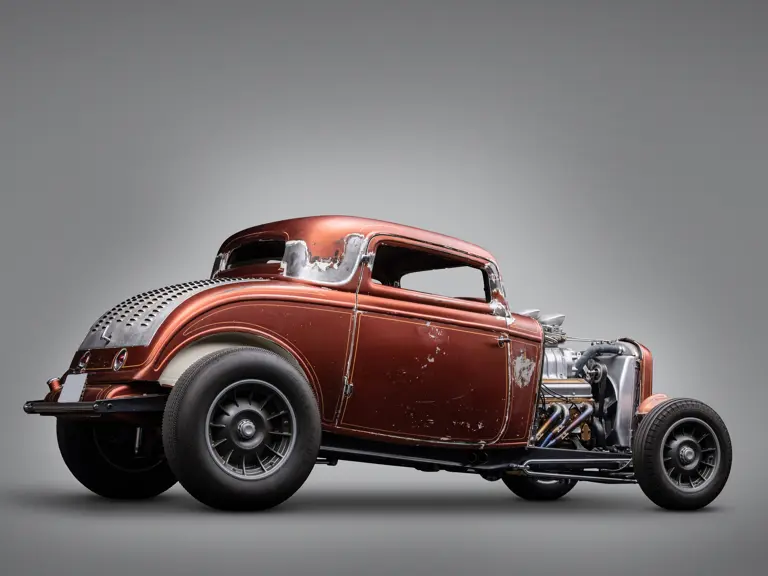
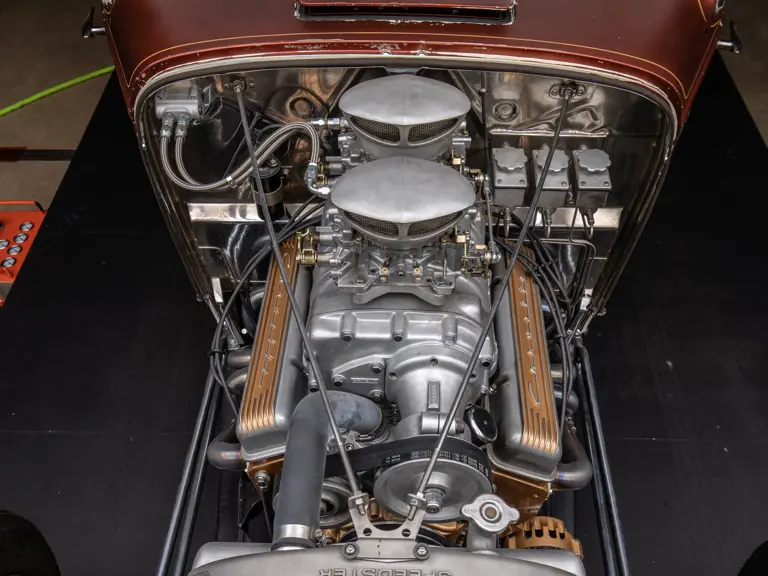
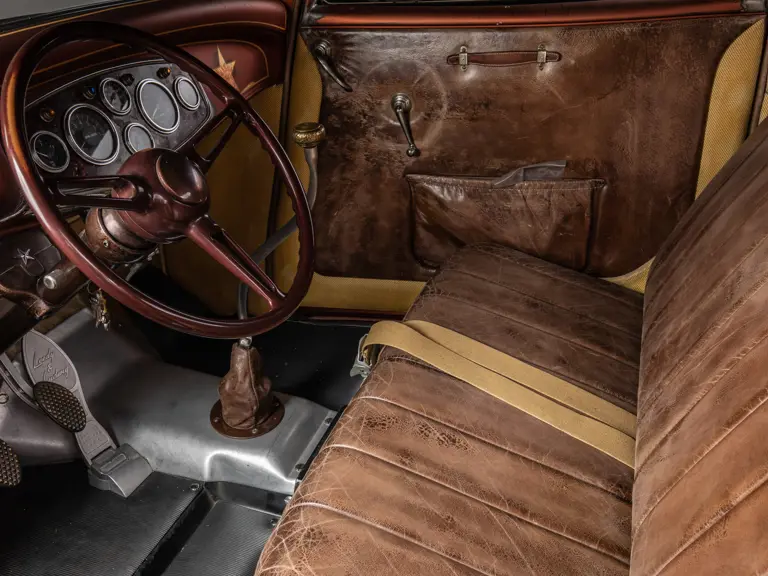
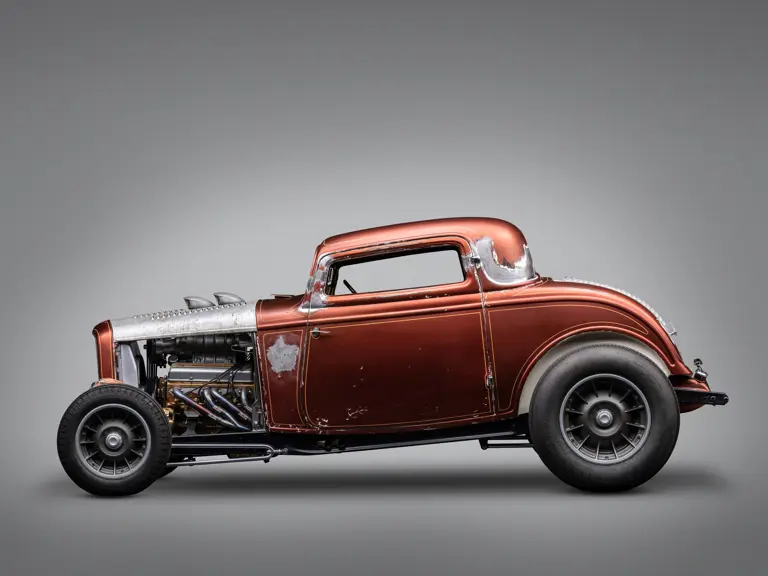
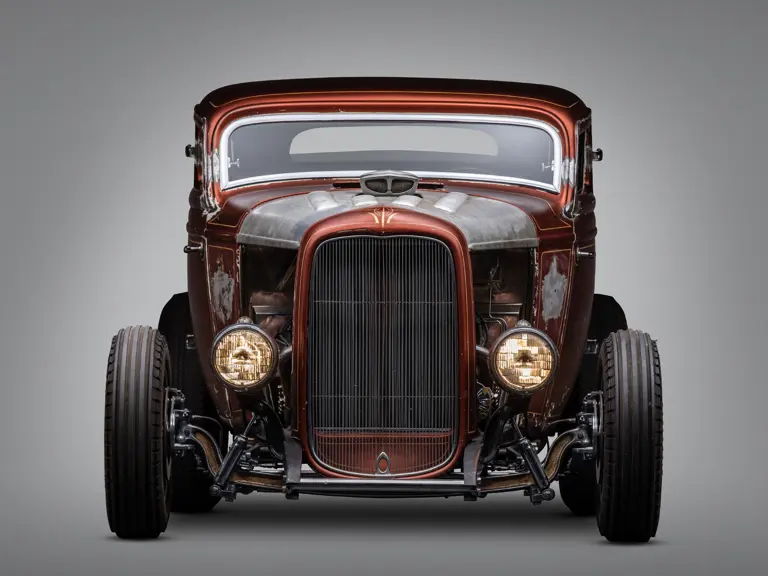
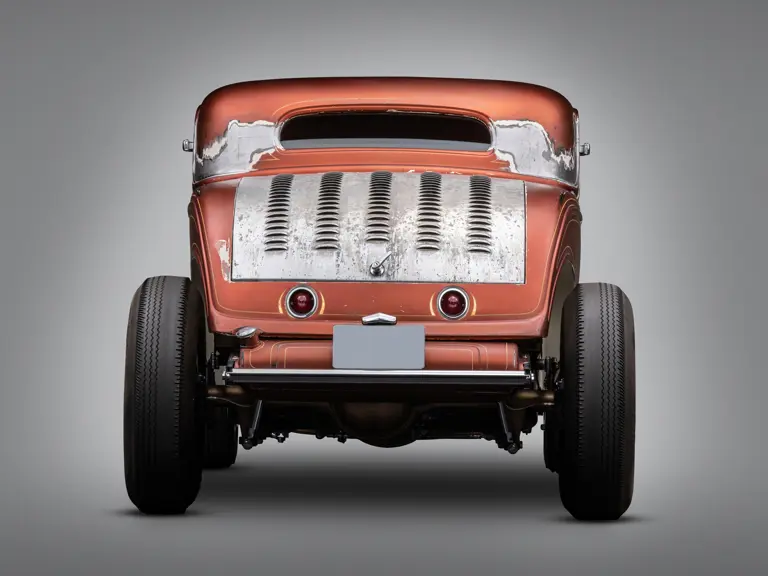


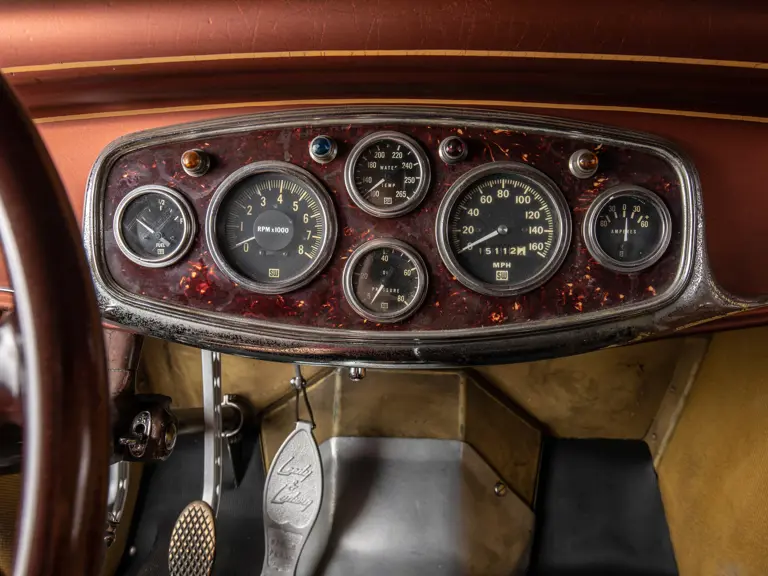


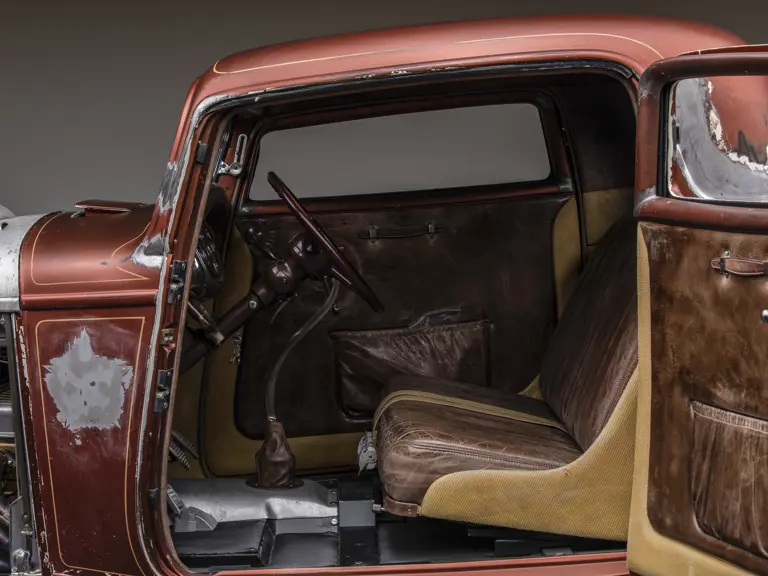
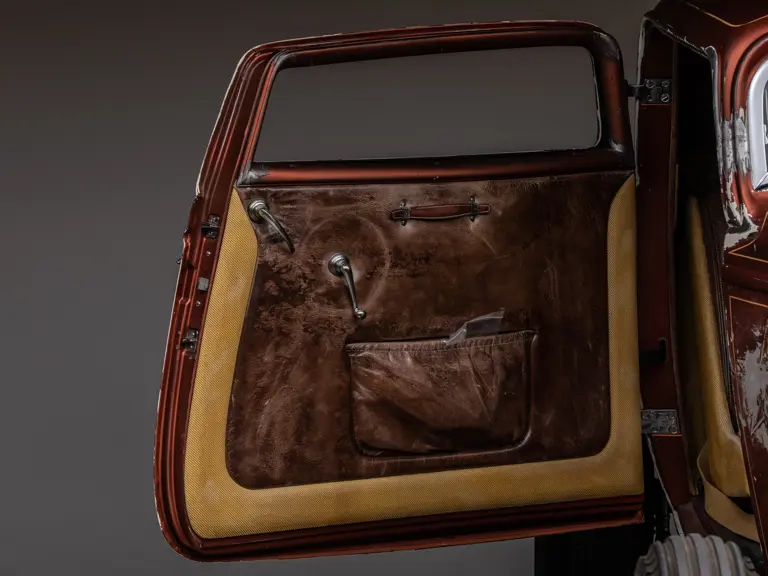
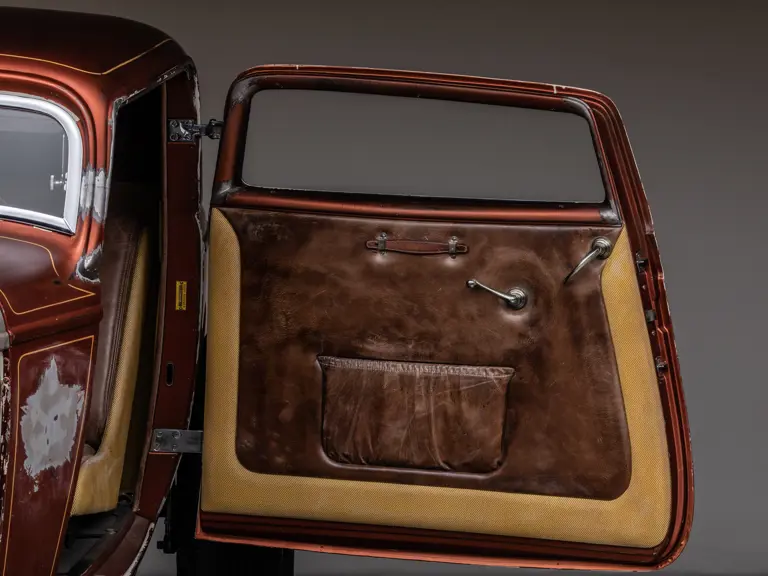

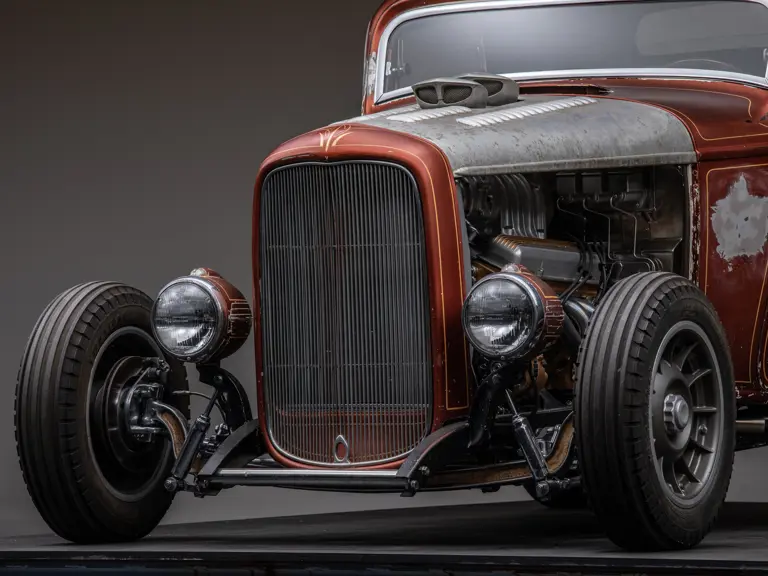

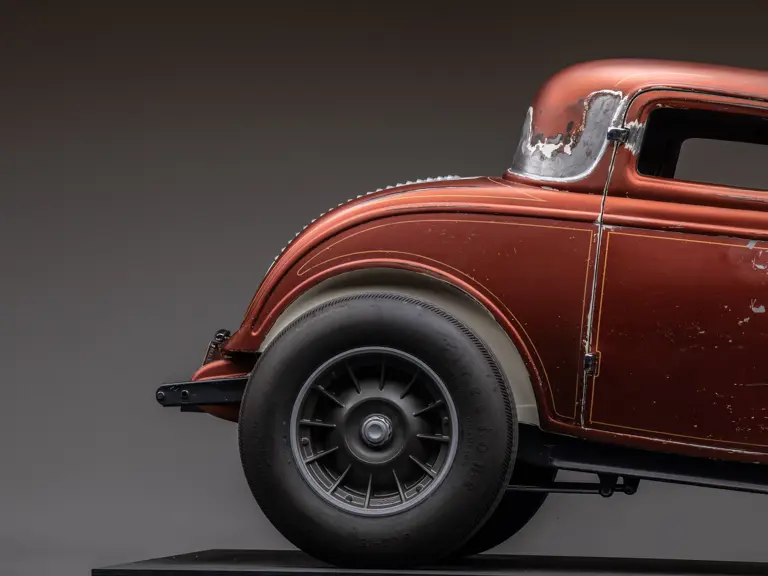
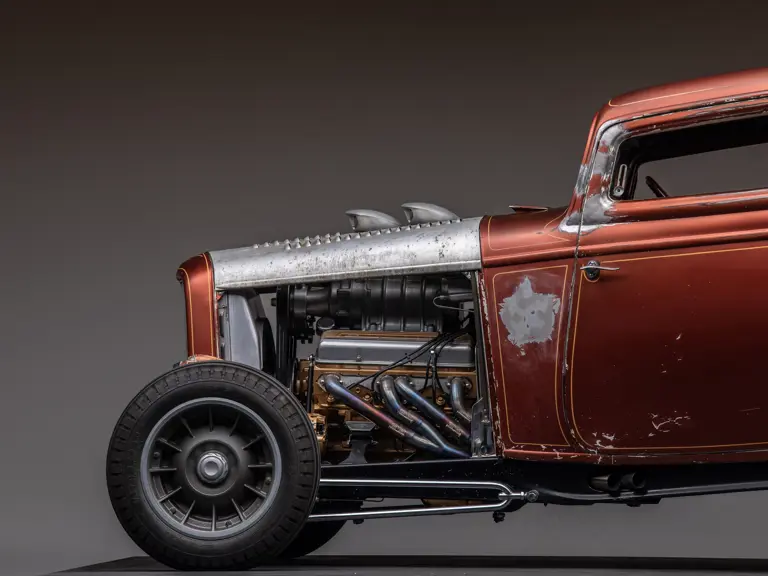
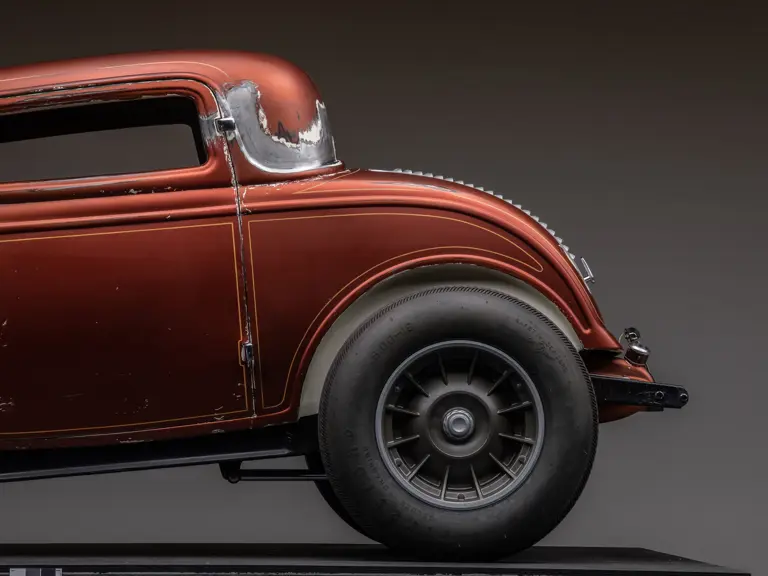

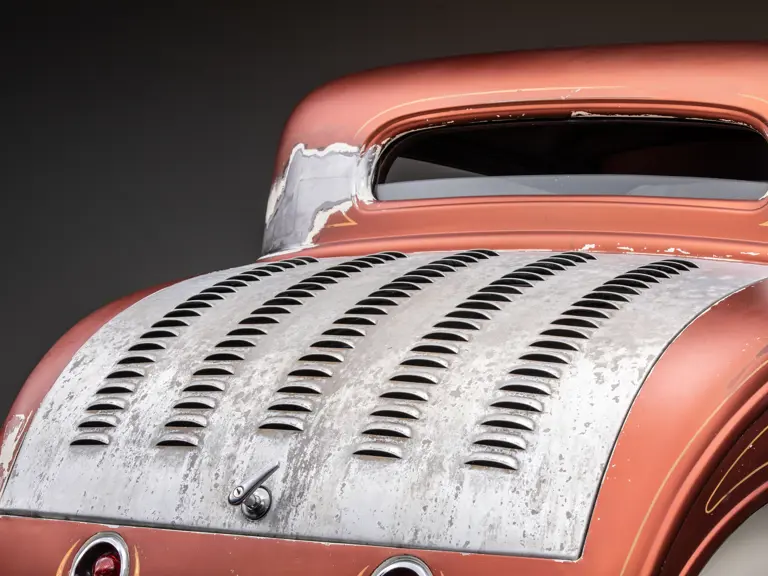

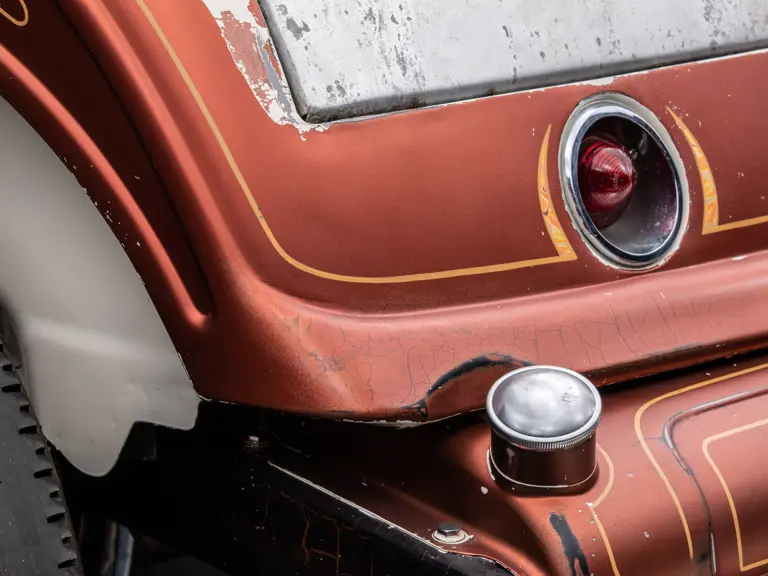
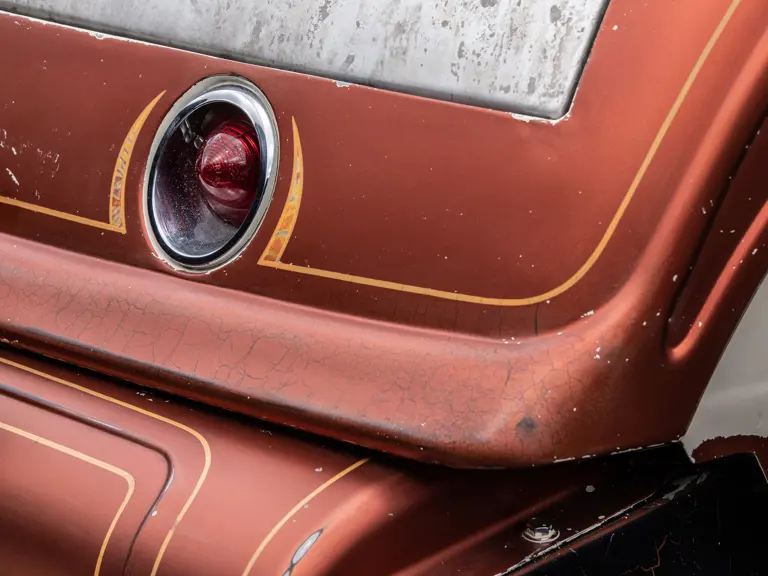
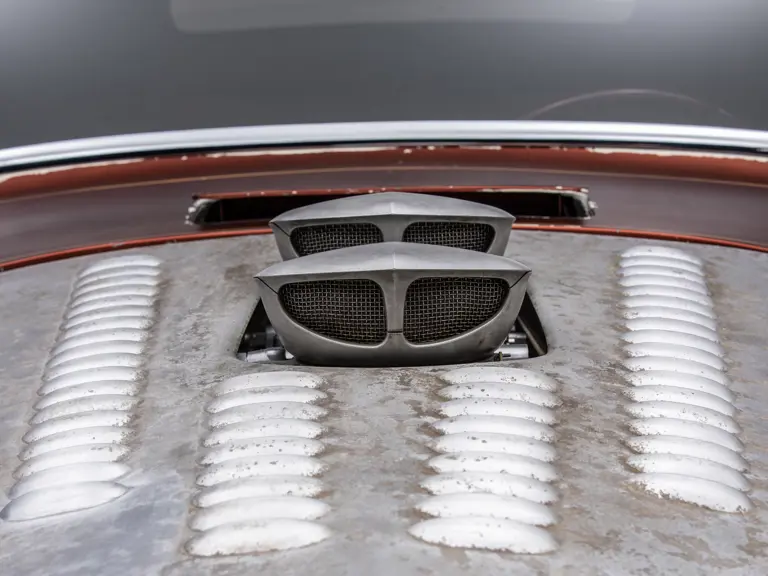
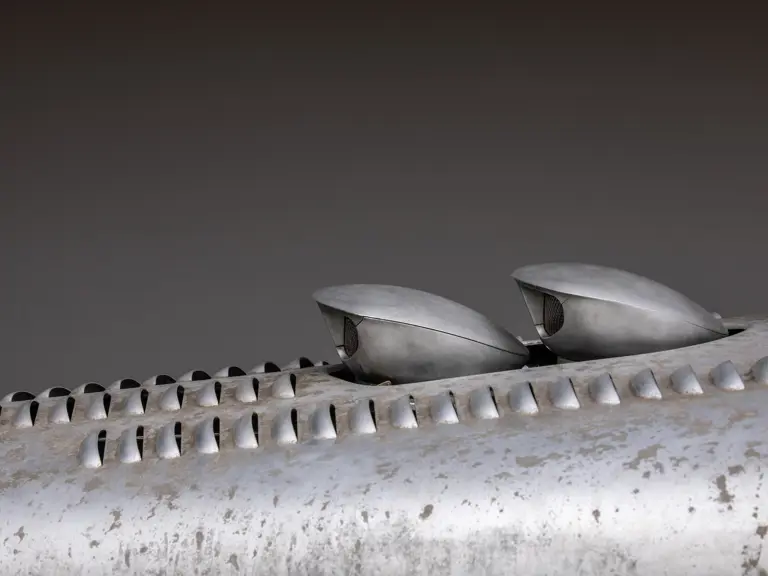
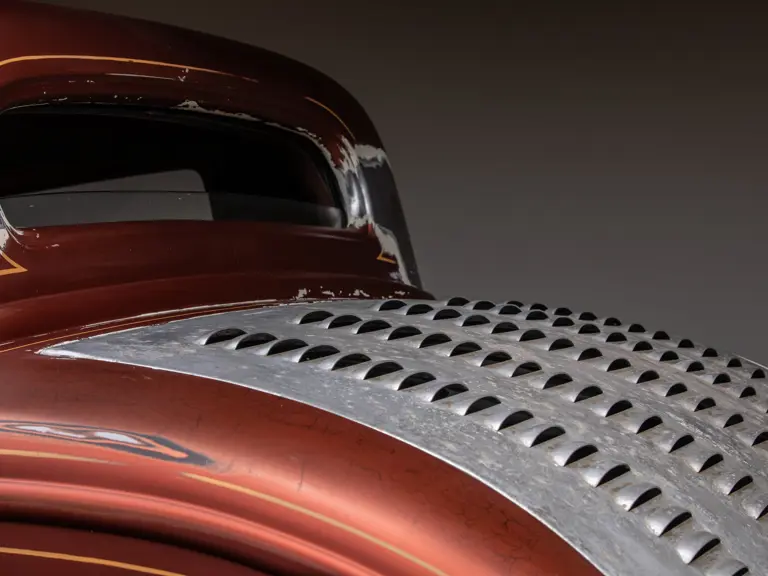
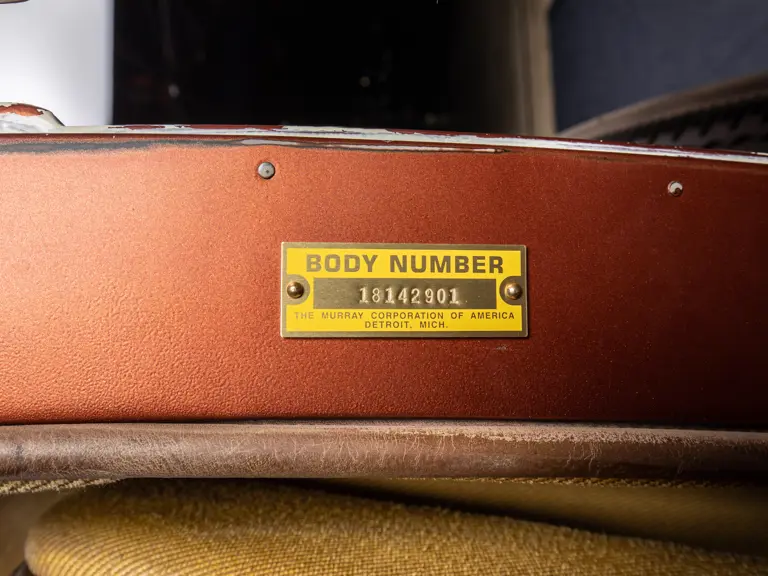
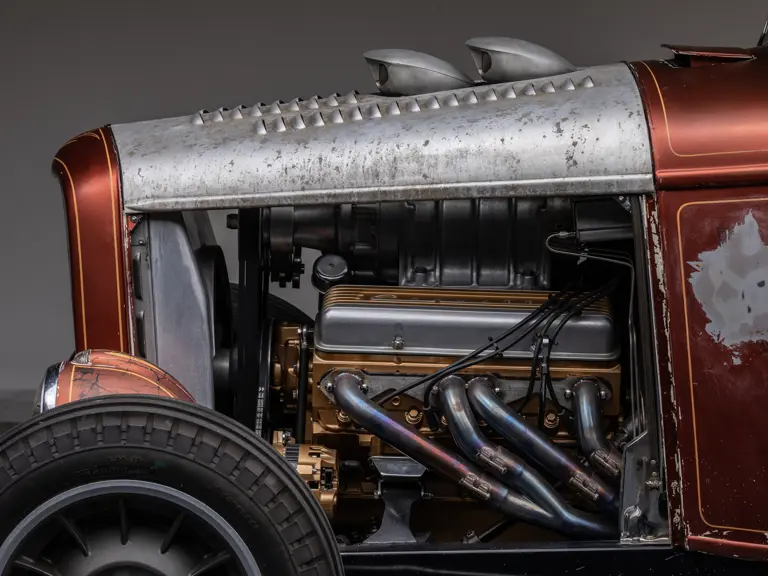
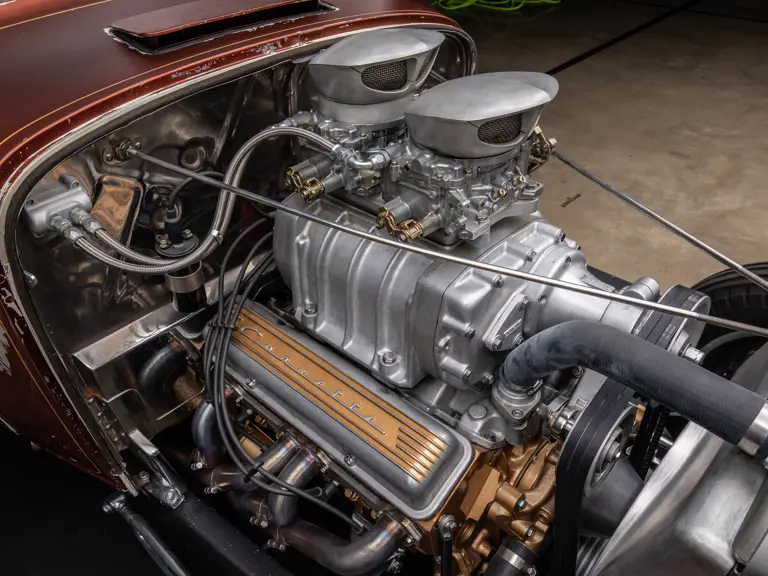

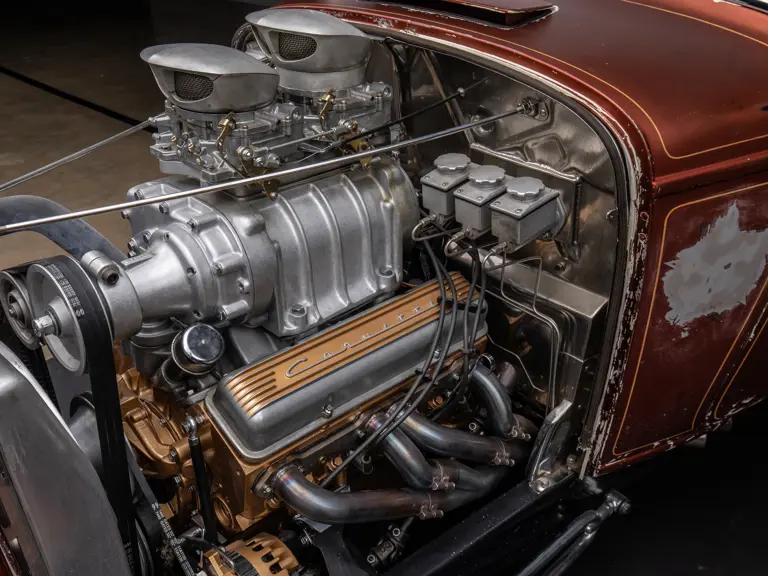
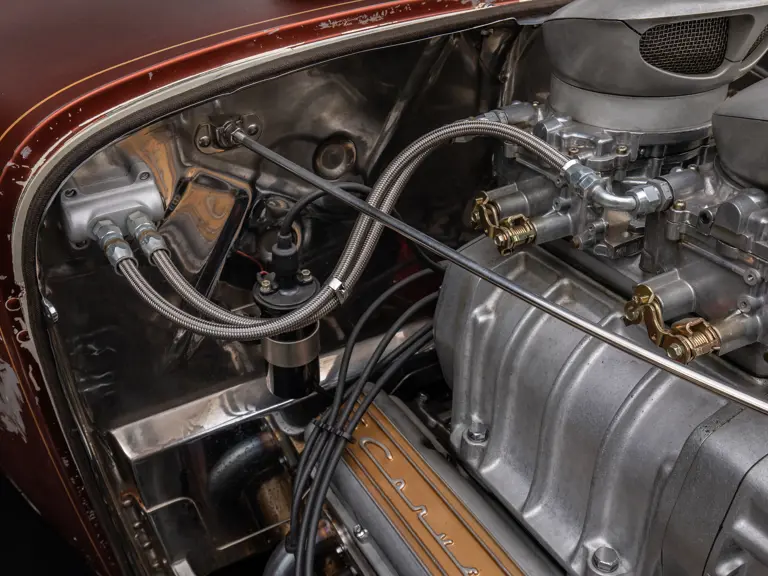

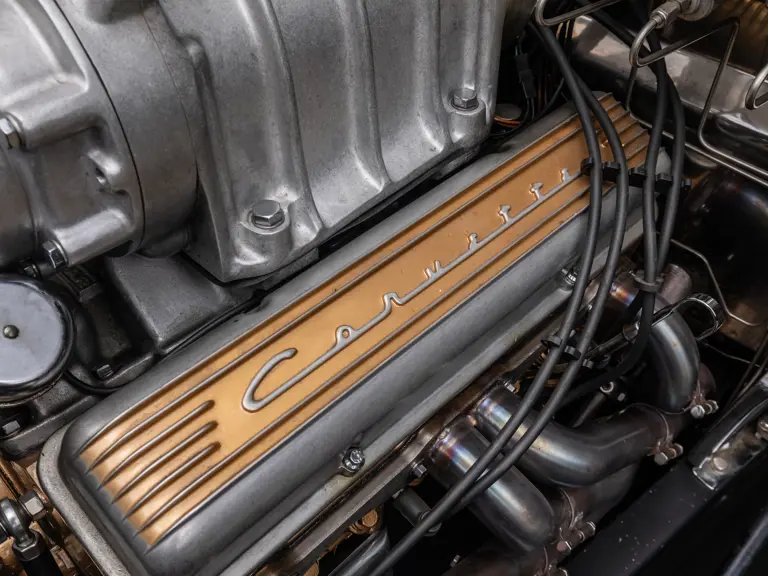
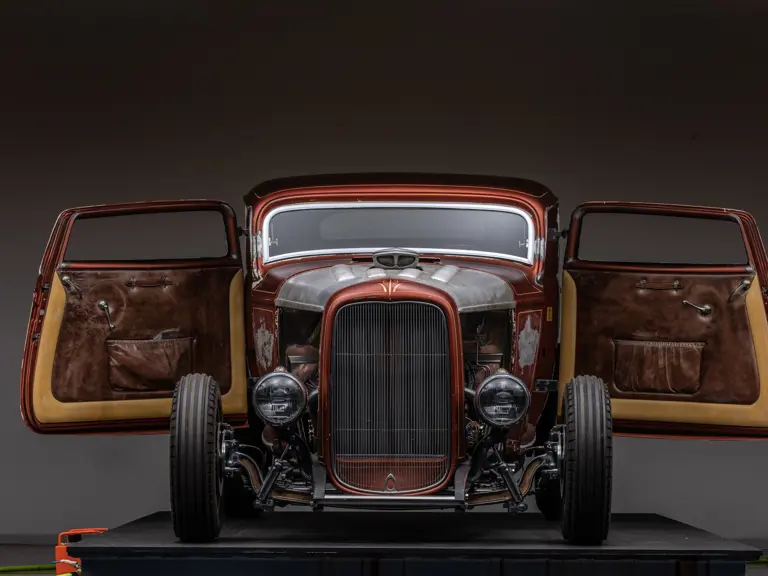
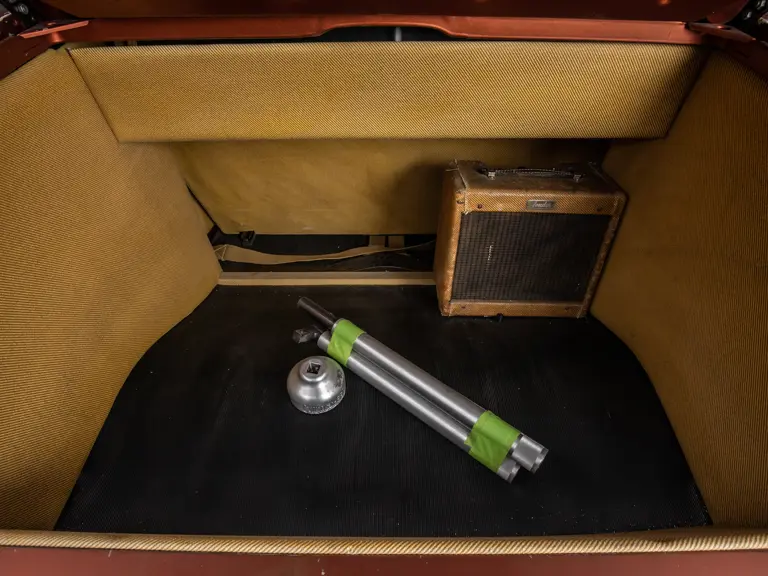
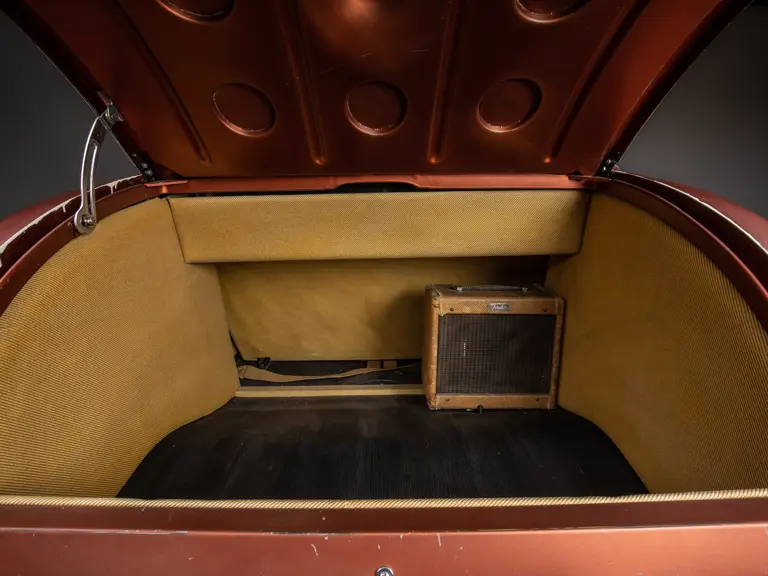

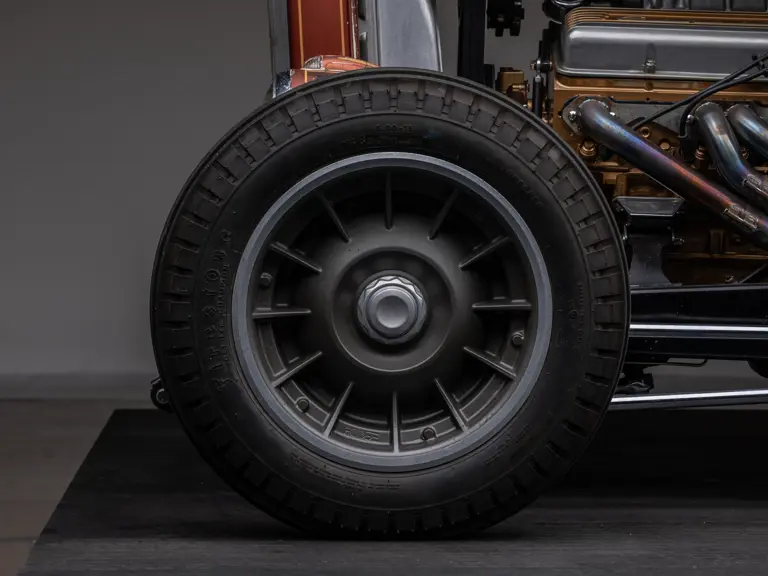

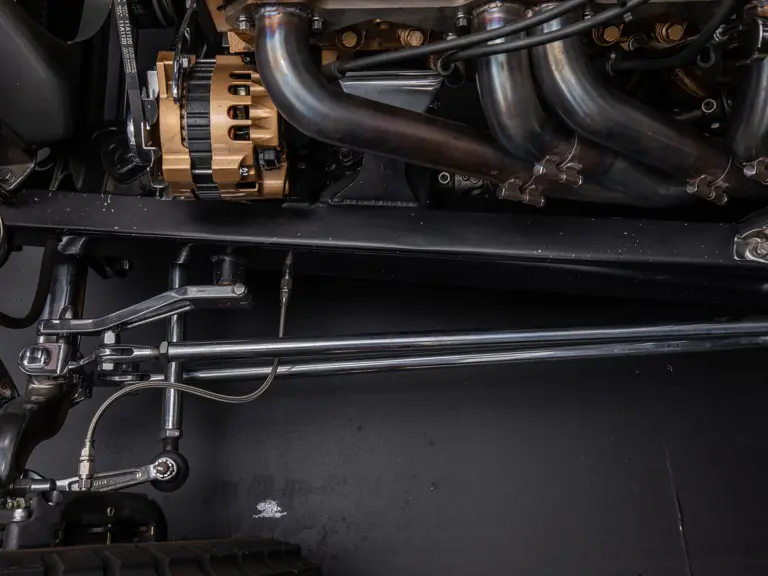
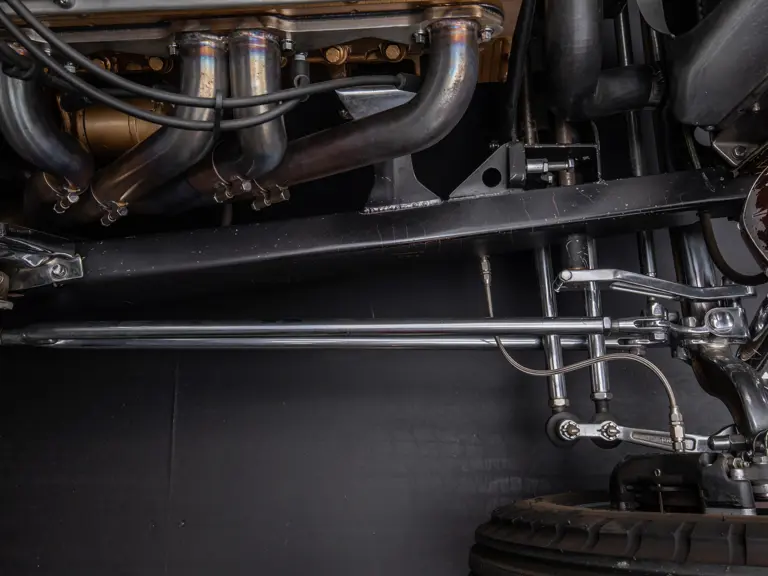
 | Monterey, California
| Monterey, California


